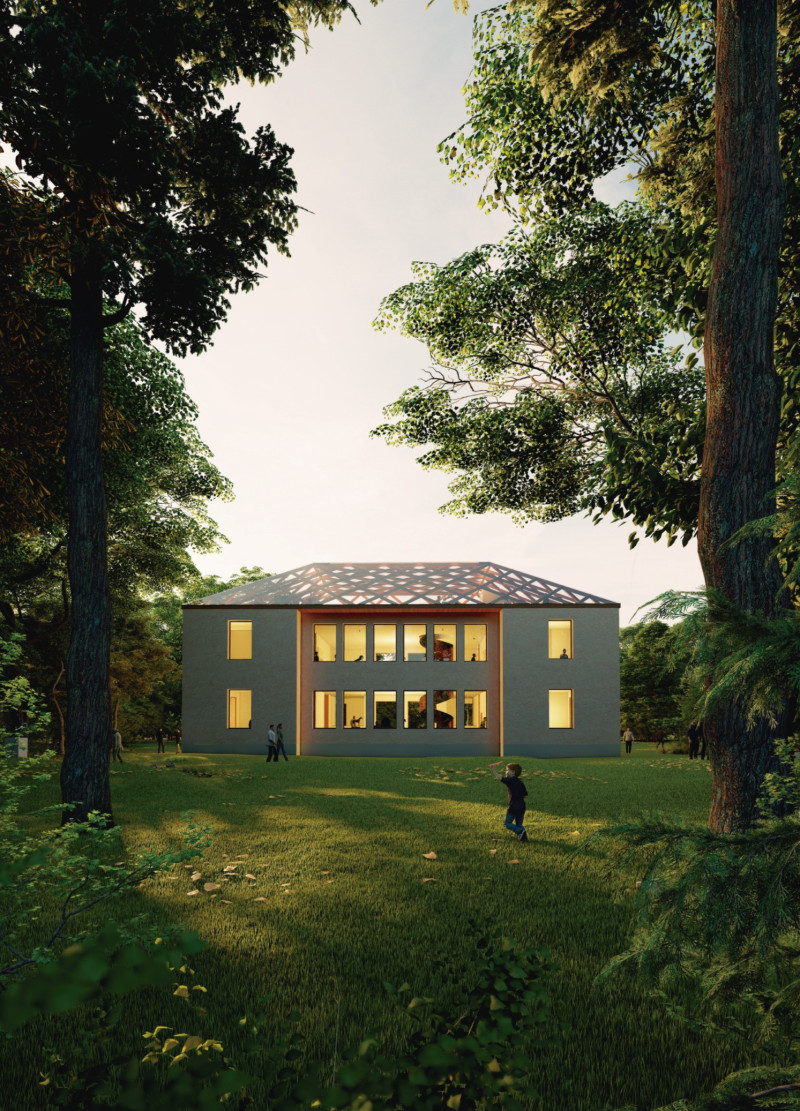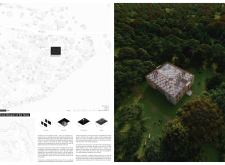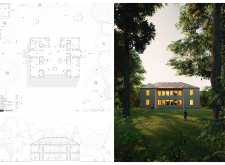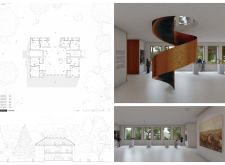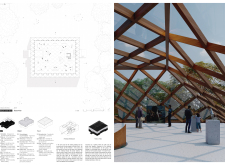5 key facts about this project
The Omuli Museum of the Horse is positioned within the North Vidzeme Biosphere Reserve in Latvia, an area known for its rich variety of plant and animal life. The aim is to convert a historic building, originally a Primary School built in 1936, into a functional museum that respects its past while adapting to modern needs. The design seeks to create a connection between the structure and its natural surroundings, providing spaces that support both public and private activities and enhance visitor involvement.
Architectural Organization
The layout clearly defines zones within the museum to separate public areas from more private functions. The ground floor includes a café, artist workshops, and administrative offices, serving the needs of visitors and staff. A dedicated staircase helps facilitate movement through the building, making it easy for users to navigate their experience.
Exhibition Space
At its core, the museum features spacious exhibition halls that extend upward to the roof. This central area allows for a wide range of artistic displays and encourages visitors to engage with both the artwork and the innovative aspects of the building itself. A staircase promotes vertical movement, inviting visitors to explore different levels and discover various exhibits along the way.
Phased Development
The project will be completed in several phases, starting with the removal of old and damaged architectural elements, such as the roof and inefficient window designs. This initial step will help establish vital functional spaces, like the café and artist workshops, which enrich the community's activities. Future phases will introduce residential spaces for groundskeepers and artists, along with improvements for accessibility, ensuring that the museum meets the needs of a wide audience.
Visitor Experience
The upper floor of the museum is dedicated to the Museum of the Horse, providing visitors with an environment filled with natural light. Here, the design offers views of the surrounding biosphere reserve. This connection to nature enhances the experience by allowing insights into both the displayed art and the outside world. The overall structure emphasizes openness, allowing for interaction between the interior spaces and the beautiful landscape, which adds depth to the visit for everyone.


